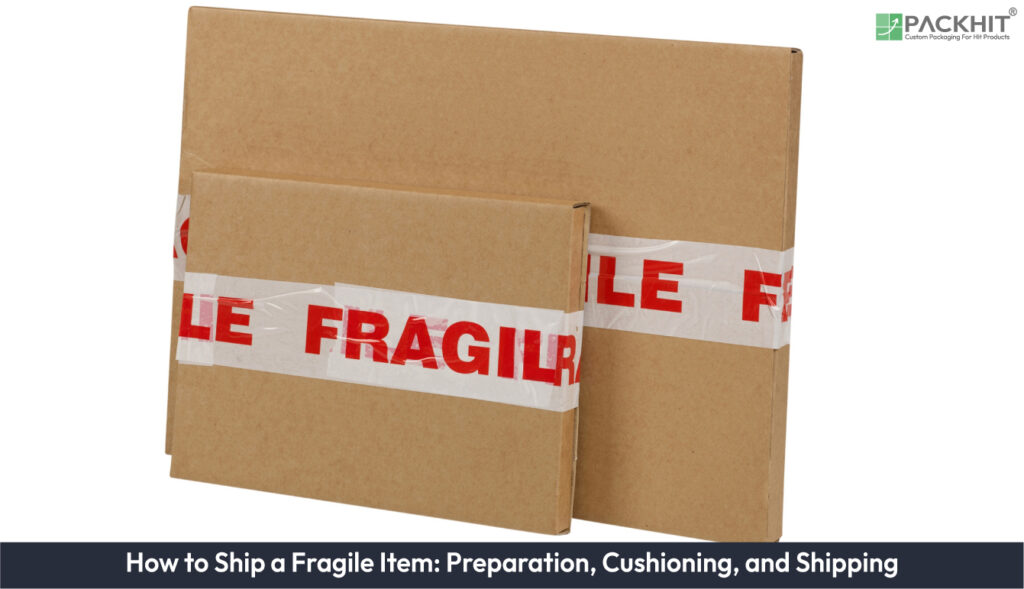Shipping fragile items requires a systematic approach that integrates material selection, protective cushioning, and optimized handling procedures to minimize the risk of damage during transit. This process involves the use of specialized packaging materials, such as corrugated boxes and padded mailers, combined with shock-absorbent fillers like bubble wrap or foam inserts. Proper labeling and adherence to carrier-specific guidelines further enhance the likelihood of safe delivery.
- What is a Fragile Item?
- How to Prepare Fragile Items for Shipping?
- What are the Best Cushioning Materials for Fragile Items?
- How Do Protective Shipping Containers Enhance Safety for Fragile Items?
- What Role Does Carrier Selection Play in Fragile Shipping?
- How to Optimize Shipping Costs for Fragile Items?
- What are the Common Challenges in Fragile Shipping?
What is a Fragile Item?
A fragile item is any object that is susceptible to breakage, deformation, or functional impairment when subjected to external forces such as impact, vibration, or compression. Examples include glassware, ceramics, electronics, and certain types of artwork. The inherent vulnerability of these items necessitates the use of specialized packaging solutions designed to mitigate mechanical stress during transportation.
How to Prepare Fragile Items for Shipping?
Preparation begins with selecting an appropriate shipping container. Corrugated boxes, padded mailers, and rigid envelopes are commonly used due to their structural integrity and protective qualities. The container should be sized to allow for adequate cushioning while preventing excessive movement of the item inside. Before packing, fragile items should be inspected for pre-existing damage and, if necessary, disassembled into smaller components to reduce stress points.
Labeling and Documentation
Proper labeling is essential for fragile shipments. Labels such as “Fragile” or “Handle with Care” should be prominently displayed on all sides of the package. Additionally, shipping documentation should include detailed handling instructions to inform carriers of the item’s specific requirements.
What are the Best Cushioning Materials for Fragile Items?
Cushioning materials play a pivotal role in absorbing shocks and vibrations during transit. Common options include bubble wrap, foam inserts, air pillows, and packing peanuts. Each material offers distinct advantages based on the item’s weight, shape, and fragility:
- Bubble Wrap: Provides excellent shock absorption and is ideal for lightweight items such as glassware or electronics.
- Foam Inserts: Customizable to fit the contours of irregularly shaped items, offering superior protection for high-value goods.
- Air Pillows: Lightweight and space-efficient, suitable for filling voids in packages containing less fragile items.
- Packing Peanuts: Effective for cushioning but may shift during transit, requiring careful application.
How Do Protective Shipping Containers Enhance Safety for Fragile Items?
Protective shipping containers are engineered to safeguard fragile items against external forces during transit. These containers are typically constructed from durable materials such as corrugated cardboard, plastic, or foam. Their high durability ensures resistance to punctures, compression, and environmental factors like moisture. For fragile items, double-walled corrugated boxes or rigid containers with reinforced edges are recommended.
Durability and Shock Absorption
The durability of protective shipping containers is a critical factor in preventing damage. According to industry standards, containers with high shock-absorbent properties reduce the likelihood of breakage by up to 80%. This is particularly relevant for items shipped over long distances or through multiple handling points.
Eco-Friendly Alternatives
Emerging trends in shipping emphasize the use of eco-friendly materials, such as biodegradable foam and recycled cardboard. These options provide comparable protective qualities while reducing environmental impact, aligning with sustainability goals in the logistics industry.
What Role Does Carrier Selection Play in Fragile Shipping?
The choice of carrier significantly influences the safety of fragile shipments. Carriers offering specialized handling services, such as white-glove delivery or climate-controlled transport, are better equipped to manage delicate items. Additionally, carriers with robust tracking systems enable real-time monitoring, allowing for prompt intervention in case of delays or mishandling.
Insurance and Liability
Shipping insurance is a critical consideration for fragile items. Most carriers offer coverage options that compensate for damage or loss during transit. Manufacturers should evaluate the terms of liability and ensure that the declared value of the shipment aligns with the item’s replacement cost.
How to Optimize Shipping Costs for Fragile Items?
While ensuring the safety of fragile items is paramount, cost optimization remains a key concern for manufacturers. Strategies to reduce shipping expenses include:
- Dimensional Weight Optimization: Use appropriately sized containers to minimize dimensional weight charges imposed by carriers.
- Bulk Shipping Discounts: Consolidate shipments to qualify for volume-based discounts.
- Reusable Packaging: Invest in durable, reusable containers to reduce long-term packaging costs.
What are the Common Challenges in Fragile Shipping?
Despite advancements in packaging and logistics, fragile shipping presents several challenges:
- Handling Errors: Mishandling by carriers remains a leading cause of damage.
- Environmental Factors: Exposure to extreme temperatures or humidity can compromise the integrity of certain materials.
- Cost Implications: High-quality packaging materials and specialized services increase shipping costs.
Addressing these challenges requires a combination of robust packaging solutions, carrier collaboration, and continuous process improvement.

